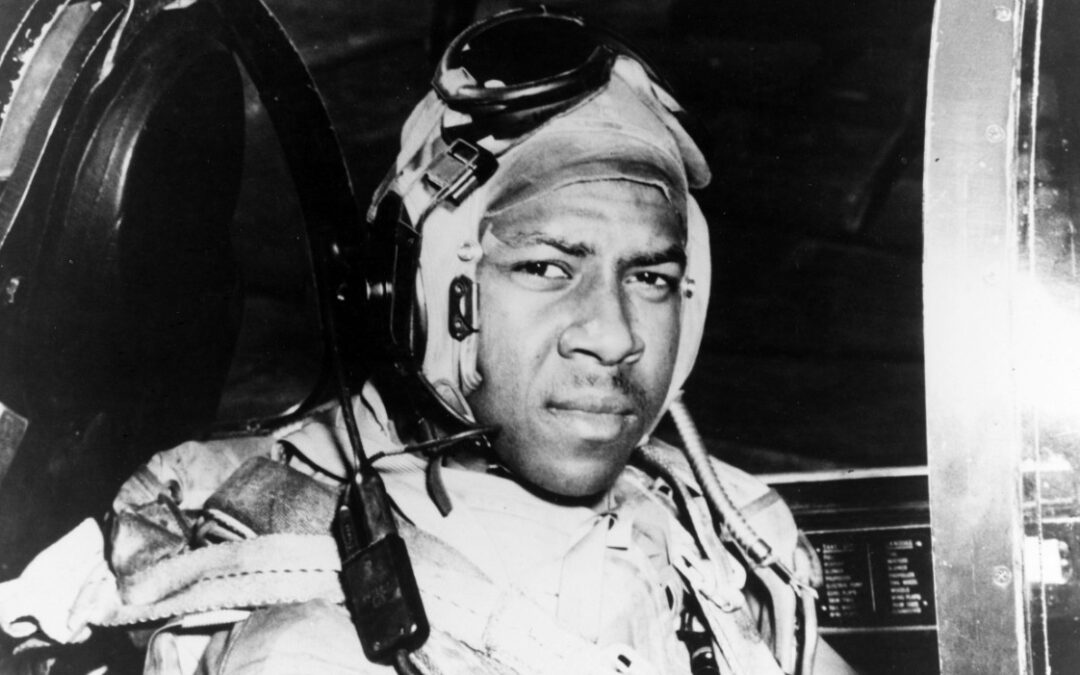Jesse Leroy Brown was born in Hattiesburg, Mississippi, into a sharecropper family. He was a school athlete who excelled at math and dreamed of being a pilot from the time he was a young boy. When he left Mississippi to attend Ohio State University in 1944, his high school principal wrote, “As the first of our graduates to enter a predominantly white university, you are our hero.” Despite working midnight shifts loading boxcars for the Pennsylvania Railroad to earn money for his education, he still maintained an exceptional GPA.
Brown joined the Naval Reserve to help pay for his college tuition. After seeing a poster recruiting students for the naval aviation program, he was discouraged from applying and told he would never see the inside of a cockpit. Still, he persisted and was finally permitted to take the qualification exams. Even after making it through five hours of written and oral exams and a rigorous physical exam, Brown expressed to his friend, “I’m not sure the Navy wants me.”
He became the first African American man to complete Navy flight training at 22. On December 4, 1950, Brown was hit and crash-landed his Corsair on the side of a mountain. Circling over the crash site in his Corsair, the squadron commander realized something was wrong when Brown didn’t emerge from the wrecked aircraft cockpit and decided to crash-land next to Brown’s wrecked Corsair. The squadron commander risked the possibility of court-martial, capture, and losing his own life by ignoring his commanding officer’s directive, “If a plane goes down, that’s one down. We don’t need Hollywood stuff.”
Finding Brown in pain, bleeding, and trapped in his aircraft by a damaged instrument panel, with no way to rescue him. Another pilot arrived in response to the radio distress call, but they could not remove Brown from his aircraft. Brown asked his squadron commander to tell his wife, Daisy, how much he loved her before dying in his cockpit. As daylight came to an end and the possibility of capture grew, the pilots that came to his aid were forced to leave Brown’s body behind.
Unable to safely recover his body, Brown was honored with a warrior’s funeral. On December 7, 1950, seven aircraft loaded with napalm and piloted by Ensign Brown’s friends made several low passes over his downed Corsair before dropping the napalm on his plane.
Ensign Jesse Brown posthumously received the Distinguished Flying Cross, the Air Medal, and the Purple Heart. His squadron commander anticipated receiving court-martial for defying direct orders and willful destruction of a Navy aircraft. Instead, he received the Medal of Honor for “exceptionally valiant action and selfless devotion to a shipmate.”
In 1973, the USS Jesse L. Brown (DE-1089) was launched; Brown’s squadron commander was in attendance, standing next to his widow. To learn more about the inspiring story of Ensign Jesse L. Brown, visit this article at the Naval History and Heritage Command.

